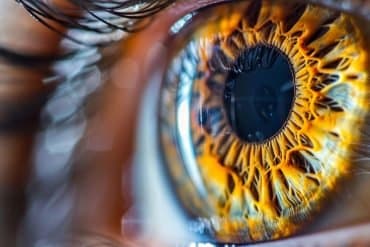Summary: Study reveals both similarities and differences in how the left and right sides of the brain process semantic memory.
Source: University of Manchester.
The study – led by University of Manchester psychologists – is the first of its kind to assess the similarities and differences in how the left and right sides of the brain process semantic memory.
The research, led by Dr Grace Rice and Professor Matthew Lambon Ralph from The University of Manchester, was funded by the Engineering and Physical Sciences Research Council and the Medical Research Council.
The team – working with neuropsychologists at Salford Royal and The Walton Centre for neurology in Liverpool – worked with 41 patients who had part of their brains removed to treat their long-standing epilepsy.
The patients – who now experience fewer seizures and are able to go back to work and learn to drive as a result of the surgery – had their verbal and visual semantic memory tested.
The surgery removes part of the brain that causes the seizures, but also removes tissue which researchers believe is involved in storing semantic memories. Twenty of the patients had surgery to remove part of the brain, called the anterior temporal lobe, on the right side, and 21 had surgery to remove the left anterior temporal lobe.
To test their verbal semantic memory, the team’s assessments included testing patients’ ability to name pictures and celebrities (including Brad Pitt, Princess Di and the Queen), and their ability to match words in terms of their meaning.
And to test their visual memory, the patients were asked to identify emotions of people in photographs and say if a face was familiar to them.
The test results were compared with 20 more people who did not have any neurological problems.
Dr Grace Rice, from The University of Manchester said: “Popularly, there is a lot of interest in whether there are similarities or differences between the left and right sides of the brain.

“Our research for the first time shows that – at least for semantic memory – both sides of the brain play an important role in visual and verbal semantic memory.
“But there is a significance difference when it comes to verbal expression of this knowledge, which was effected more by surgery to the left side of the brain.
“Our research provides an important insight both into what effects this particular kind of epilepsy surgery has on behaviour, but also helps us to understand where in the brain memory is stored.”
Source: University of Manchester
Publisher: Organized by NeuroscienceNews.com.
Image Source: NeuroscienceNews.com image is in the public domain.
Original Research: Open access research in Cerebra Cortex.
doi:10.1093/cercor/bhx362
[cbtabs][cbtab title=”MLA”]University of Manchester “Can’t Remember a Name? Blame the Left Side of Your Brain.” NeuroscienceNews. NeuroscienceNews, 23 January 2018.
<https://neurosciencenews.com/name-recollection-left-brain-8363/>.[/cbtab][cbtab title=”APA”]University of Manchester (2018, January 23). Can’t Remember a Name? Blame the Left Side of Your Brain. NeuroscienceNews. Retrieved January 23, 2018 from https://neurosciencenews.com/name-recollection-left-brain-8363/[/cbtab][cbtab title=”Chicago”]University of Manchester “Can’t Remember a Name? Blame the Left Side of Your Brain.” https://neurosciencenews.com/name-recollection-left-brain-8363/ (accessed January 23, 2018).[/cbtab][/cbtabs]
Abstract
The Roles of Left Versus Right Anterior Temporal Lobes in Semantic Memory: A Neuropsychological Comparison of Postsurgical Temporal Lobe Epilepsy Patients
The presence and degree of specialization between the anterior temporal lobes (ATLs) is a key issue in debates about the neural architecture of semantic memory. Here, we comprehensively assessed multiple aspects of semantic cognition in a large group of postsurgical temporal lobe epilepsy (TLE) patients with left versus right anterior temporal lobectomy (n = 40). Both subgroups showed deficits in expressive and receptive verbal semantic tasks, word and object recognition, naming and recognition of famous faces and perception of faces and emotions. Graded differences in performance between the left and right groups were secondary to the overall mild semantic impairment; primarily, left resected TLE patients showed weaker performance on tasks that required naming or accessing semantic information from a written word. Right resected TLE patients were relatively more impaired at recognizing famous faces as familiar, although this effect was observed less consistently. These findings unify previous partial, inconsistent results and also align directly with fMRI and transcranial magnetic stimulation results in neurologically intact participants. Taken together, these data support a model in which the 2 ATLs act as a coupled bilateral system for the representation of semantic knowledge, and in which graded hemispheric specializations emerge as a consequence of differential connectivity to lateralized speech production and face perception regions.






